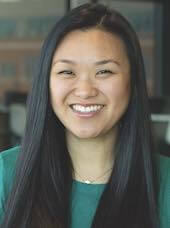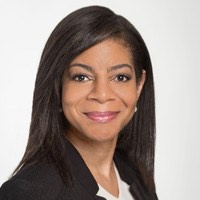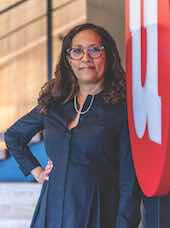12 minutes
Embrace the credit union philosophy while making a positive societal impact.
Many people wonder if the U.S. Supreme Court’s June 29 decision to strike down affirmative action in college admissions will ultimately impact corporate diversity, equity and inclusion initiatives, including credit union DEI initiatives. But for the moment, many CUs have kept DEI as a focus and are continuing to roll out new efforts.
Starting With an Inward Focus
Sheila Milton, VP/diversity, equity and inclusion at $5 billion UW Credit Union, Madison, Wisconsin, says the CU started its DEI journey in 2015 by focusing “more inward, building on our cultural competency and understanding of DEI and really focusing on changing our minds so that we could think and do things differently.
“This awareness-building and commitment started at the top,” she says. “We believe that DEI is a journey without a finish line.”
UWCU has empowered its employees to start employee resource groups to support and celebrate various areas of diversity. According to the CU’s website, it has six ERGs: Black Excellence, Green Team, Helping Young Professionals Engage, Raices Latinx, Sexuality and Gender Alliance, and the Women’s Initiative Network.
“About half of our employees are involved in at least one employee resource group,” Milton details. “It (having ERGs) has helped to create an inclusive environment where people belong.”
The fact that UWCU had previously identified DEI as one of its embedded values has been helpful.
“We use those (values) to hire people and as part of our performance review process,” Milton says, noting that the CU’s hiring plan includes steps to ensure diverse new hires can thrive. This includes having performance reviews and looking to ensure there are opportunities for upward mobility.
“We’re ... tracking talent mobility of our employees of color and our white employees with a goal over time to have no gap in the career development rates between the two groups,” Milton says. “We’re working to make sure our hiring and promotion practices are equitable.”
Milton says the use of bias interrupters, or tweaks to basic business systems that prevent implicit bias, assists UWCU staff members in checking their own biases during the recruiting process.
As an example of such a bias interrupter, she cites the CU’s intentional hiring process and use of data. “We have diverse hiring panels,” she says. “Then we use data to see who’s applying, getting hired and getting promoted.”
Learning and Celebrating
CUES member Lindsay Taplin, AVP/DEI at $1.1 billion Seattle Credit Union, Seattle, says her organization’s commitment to DEI is so deep-rooted, unwavering and foundational to its purpose that it established a dedicated team to build and execute a comprehensive DEI strategy. The CU also has created an internal DEI advisory board.
“Comprised of employees elected by their colleagues and compensated for their service, the advisory board … [provides] guidance [to the leadership team and their own departments] on incorporating diverse perspectives, addressing community needs, and shaping our products and services,” Taplin says. “By providing dedicated resources and empowering employees to actively contribute, we ensure that DEI remains a priority and drives our organizational culture.”
Taplin adds that Seattle CU fosters an inclusive workplace culture by celebrating differences as often as possible.
“We ... recognize certain dates through ... Café Prosper, a virtual (for now) coffeehouse space [on Microsoft Teams] for open dialogue, education and sharing of experiences. It encourages employees to come together [quarterly] and exchange perspectives in a supportive environment that fosters learning, empathy and collaboration among colleagues from different backgrounds. Attendance varies, but we usually see between 50 to 100 employees.”
The CU also has five employee resource groups: AAPI ERG, Black Banking Network, Latinx ERG, Pride ERG and Womxns Allyship. These groups provide a supportive space for members to connect, collaborate, advocate for their group and share understanding through allies and often partner with the DEI advisory board.
Additionally, the CU has implemented a core curriculum of required DEI training for all employees. This includes a new workshop topic every six months. The topics covered in the first year were unconscious bias and understanding race in the workplace. Next up is sexual orientation, gender identity and expression.
“We [also] invite guest speakers, experts and thought leaders to share their insights and expertise on DEI-related topics,” Taplin says. For example, “we had a speaker the Friday before Martin Luther King Jr. Day for a session titled, ‘Keeping the Dream Alive,’ to discuss ways we can proactively support the work of Dr. King. We had a professor from the University of Washington join us in June for a session titled ‘I’m Coming Out: LGBTQ Community, Policies & Wealth’ ... about the history of Pride celebrations, the laws and policies around sexual identity, and how legal and financial institutions affect finances for LGBTQ people.”
To assess its progress and identify areas for improvement, the CU uses an annual DEI employee engagement survey and employee listening sessions, Taplin says.
The survey assesses employees’ perceptions and experiences about DEI at the CU and provides quantitative metrics that help measure progress over time, while the employee listening sessions provide a forum in which employees can share their thoughts, experiences and suggestions through open and candid discussions.
“We started in 2020, so this was our fourth year,” Taplin explains. “We use a third party to deliver the survey anonymously. The listening sessions are conducted over MS Teams, ... and participants are randomly selected. This year we did three sessions with about 10 employees in each session.
“We gain qualitative insights that complement the survey data, which helps us obtain a holistic view of our progress and areas for improvement,” she continues. “This data-driven approach allows us to identify trends, patterns and specific areas where we can enhance DEI efforts. An example of this is low survey scores around access to DEI training opportunities. Because of those scores, we implemented our biannual DEI workshops and Café Prosper events. The year after executing these, we saw survey scores jump 60% on that survey question.”

First White Male CEO!
CUES member Jared Freeman, CCE, president/CEO at $625 million OnPath Federal Credit Union, Metairie, Louisiana, says DEI has always been in the fabric of the culture of the CU.
“We’re a minority depository institution, which means over half of our membership and over half of our board are made up of minorities,” he says. “That’s just who we are. And my board has been very intentional for many years about making sure that our board reflects our membership.”
Notably, Freeman points out that he is the first white male to lead the CU. “My board and I strongly believe that DEI is not a buzzword,” he says. “It’s the core of what I believe credit unions have been about since their existence.
“Many people don’t know this,” he continues, “but greater New Orleans is the largest Honduran area outside of Honduras. We have a huge, growing Spanish-speaking population. We’ve worked hard to make sure that we’re able to serve them. The city proper, New Orleans, has been a cultural melting pot forever.”
Inclusion is so ingrained in OnPath FCU that education for the board and the staff became a priority. Freeman says the education journey began about two years ago with the board bringing in a legal team to do a bias assessment for staff and baseline training on DEI and the issues surrounding it.
Freeman says the assessment didn’t identify much bias about age, race, gender or sexual orientation, perhaps at least in part because 88% of OnPath FCU’s staff members are minorities. However, the bias was heavy toward areas of operation and perceived status.
“I found this so interesting,” he says. “It was back office versus front office or branches in different geographical areas.”
The assessment was the impetus for Freeman and other executives at OnPath FCU to form a DEI council of approximately eight to nine employees selected by their peers. By design, there are no executives on the council, but it does have an executive sponsor as a resource.
“A lot that came out of that study is what the council has been focused on, really trying to improve engagement amongst groups,” Freeman says. “It’s helped our employee engagement overall,” including greater understanding and clarity about back-office and front-office roles.
“People realize that the back-office folks aren’t just eating potato chips with their feet kicked up,” he says. “And front-office people are in the trenches with our members daily ... that’s really hard.”
Freeman celebrates that the CU’s DEI council was staff- rather than executive-driven.
“I only attended a meeting once or twice when they invited me to make it a safe space for them to articulate all their opinions unencumbered. They formed a charter, a mission and a road map, then presented to our board in January of this year what they had learned, their charter and their strategic road map for the next three years. It was good for our board and them to have that exposure.”
Freeman says the DEI council has created a newsletter, hosted birthday celebrations for residents at Pontchartrain Health Care Center and held a fundraiser that enabled donating more than 60 rain ponchos to the homeless. The council also held a bowling/music hall mixer to promote team engagement.
Freeman and all key executives have earned certificates from the Diversity, Equity and Inclusion Cornell Certificate Program in partnership with CUES.
“Last year, ... we concluded that partnering with Cornell through CUES was the most promising option for us” because it offered a credit union-specific certificate, Freeman says.

Financial Inclusion for the Community
Looking at financial services through a DEI lens is crucial for ensuring equitable access for historically marginalized groups and underserved communities.
“Financial literacy is crucial to creating informed and empowered residents,” Milton says. “We regularly host free community seminars tackling anything from budgeting to becoming a homeowner. And we really focus those efforts on underserved populations.”
She adds that UWCU offers members and nonmembers complimentary, confidential, no-obligation credit consultation.
Taplin says Seattle CU has implemented community advisory councils composed of credit union representatives, community leaders and advocates, to foster meaningful dialogue, understand community needs and provide accessible financial services.
“These councils serve as a platform for open and collaborative discussions between Seattle Credit Union and community representatives,” she explains. “By actively soliciting input and involving stakeholders in the decision-making process, we ensure that our products and services are tailored to meet the needs of the communities we serve. This feedback-driven approach allows us to continuously improve and refine our offerings, ensuring equitable access for everyone.” Some product examples are the CU’s individual taxpayer identification number products, citizenship loans, interest-free products and credit-building products.”
The CU also participates in community events.
“By being present and engaged in these spaces, we can directly interact with community members, listen to their concerns and address their financial needs,” she says. “We collaborate with local organizations and nonprofits to provide financial education and resources to underserved populations, equipping them with the knowledge and tools to make informed financial decisions.”
Freeman says that as a low-income designated credit union, a community development financial institution and an MDI, OnPath FCU was able to partner with Inclusiv, an organization that helps low- and moderate-income people and communities achieve financial independence through CUs, to offer ITIN-based lending.
“We’ve been in it and lending for a couple of months, and it’s been great,” he says. “The partnership with Inclusiv solidified that because Inclusiv will act as an investor.”
Freeman is currently highly focused on OnPath FCU’s strategic goals for the newly rebranded OnPath Foundation, which focuses on education, homeownership and entrepreneurship.
“I’m very passionate about this,” he says. “I believe the most impactful thing we can do is play our part in breaking generational poverty or, as our foundation likes to say, ‘creating generational wealth.’”
Another way the CU pursues this aim is by supporting education of various kinds.
“We’ve already launched our educational scholarships,” Freeman says. “It was really important for us that it wasn’t just traditional four-year schools, but also trade schools, community colleges or vocational schools.”
Engaging Members, Community
Community engagement is also at the core of UWCU. In 2021, it created the UW Credit Union Fund for Racial Equity with United Way. The CU invested more than $1.5 million in organizations that remove barriers for people of color by creating financial stability and closing the education achievement gap in Milwaukee and Madison, Wisconsin.
Although launching the entrepreneurship initiative is one of OnPath FCU’s three goals to build financial literacy, Freeman says it goes hand-in-hand with community outreach.
“I believe that venturing into entrepreneurship will be incredibly exciting for us,” he notes. “It perfectly aligns with our credit union’s strategic goals to support small businesses through initiatives such as providing grants and organizing competitions that promote and nurture entrepreneurial endeavors.”
Freeman anticipates OnPath FCU supporting small businesses with digital marketing and communications through its advertising agency and credit union service organization, 3131 Media.
“There are small businesses that remain unaware of the numerous growth opportunities available to them,” he says. “We are privileged to have exceptional talent, and we are committed to giving back by assisting them in developing strategies related to customer acquisition, branding, digital strategy and media. I am excited about the prospect of empowering these businesses and contributing to their success.”
Steadfast Under Some Pressure
The Supreme Court’s June 29 decision to strike down affirmative action in college admissions is just one example of how diversity, equity and inclusion has become political.
“It will be important for credit unions and their leadership to remain steadfast, knowing this is the right thing to do,” says Angela Russell, chief diversity officer at CUESolutions provider TruStage (formerly CUNA Mutual Group), Madison, Wisconsin, and host of the Black Oxygen podcast. “Working on DEI isn’t political and should not be inherently political. It’s about creating better and brighter financial futures for people left out of the financial services system. That will be really important if we can remain steady despite the political noise.”
Fortunately, Russell says, credit unions don’t have to do DEI on their own.
“It depends on what’s happening in their local community, but the No. 1 thing is to develop allyships, so they don’t feel alone,” she advises.
Aligning DEI Strategy With Business Goals
Laura Sehres, VP/diversity, equity and inclusion at CUESolutions provider PSCU, St. Petersburg, Florida, says that DEI strategies should be aligned with business goals—and can promote better business outcomes.
“DEI is closely tied to both the employee and member experience,” she says. “As more credit unions optimize their organizational cultures for psychological safety and conscious inclusion, they are fostering workplace environments where employees feel a sense of trust and satisfaction, which in turn contributes to positive member experiences and loyalty.
“Ensuring all employees feel valued and included can also enhance innovation and the retention and mobility of diverse talent,” she continues. “By integrating DEI principles across operations, credit unions build employee and member experiences that drive better business outcomes.”
Sehres adds that measuring and assessing progress will also be critical to creating successful DEI strategies.
“To inform specific DEI strategies, credit unions are actively seeking ways to measure the success of their current initiatives and hold themselves accountable,” she says. “It is increasingly common for credit unions to evaluate relevant employee experience survey data, assess the diversity of the leadership bench and analyze the mobility of diverse talent, including hiring, promotion and attrition. Credit unions are leveraging these types of analyses to understand progress and identify key areas for growth.” cues icon
Formerly a member of the CUES marketing staff, Felicia Hudson Hannafan is a writer based in Chicago.







